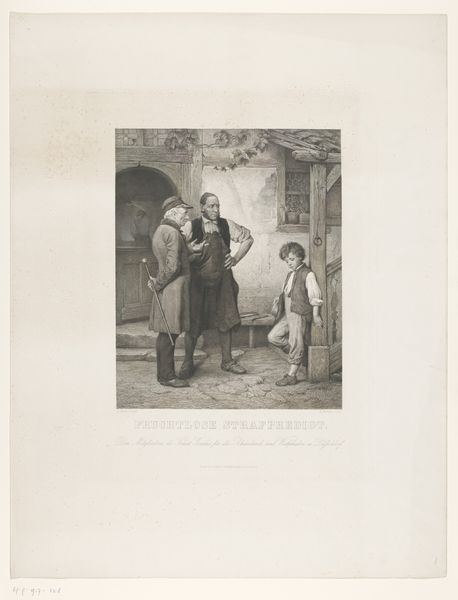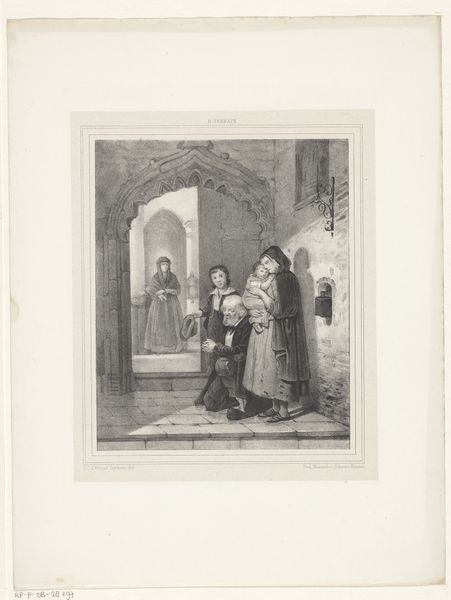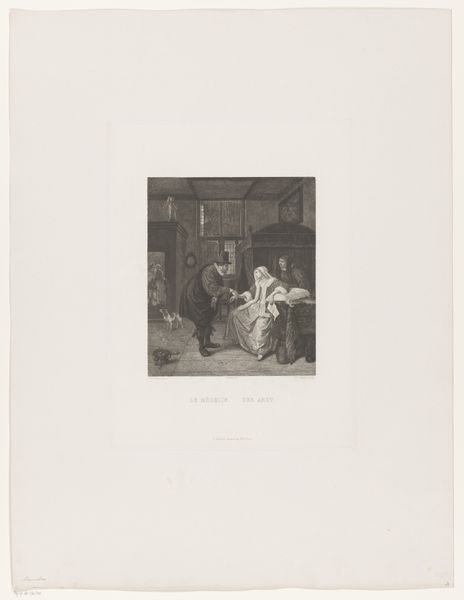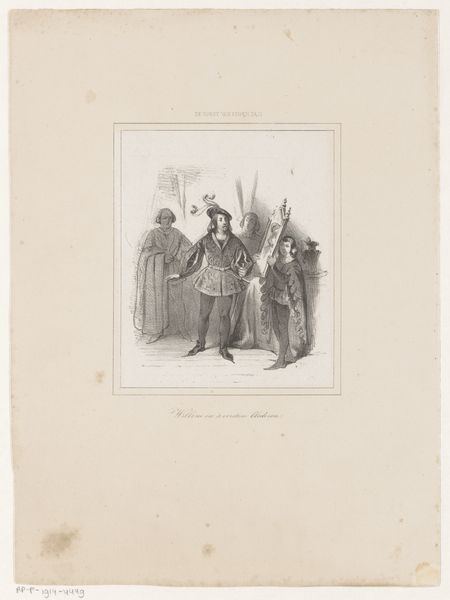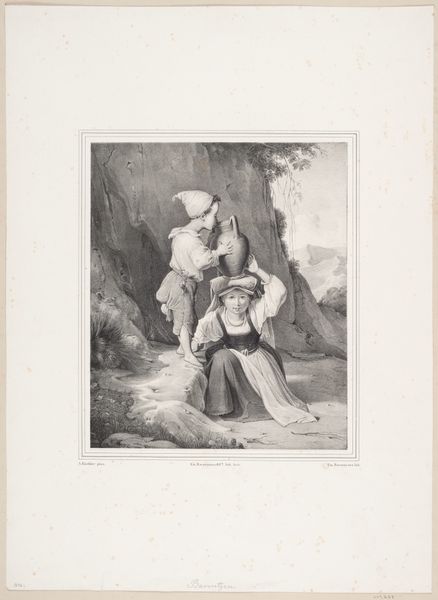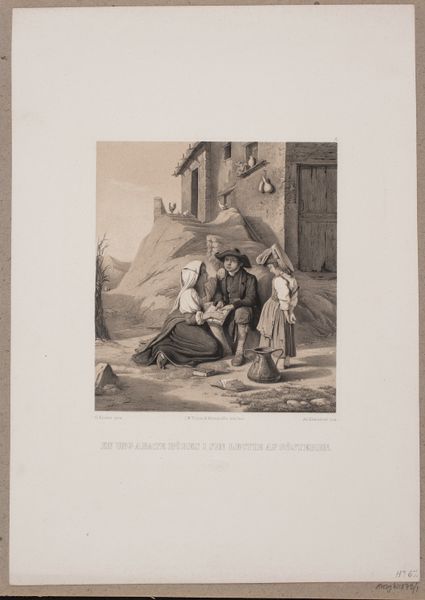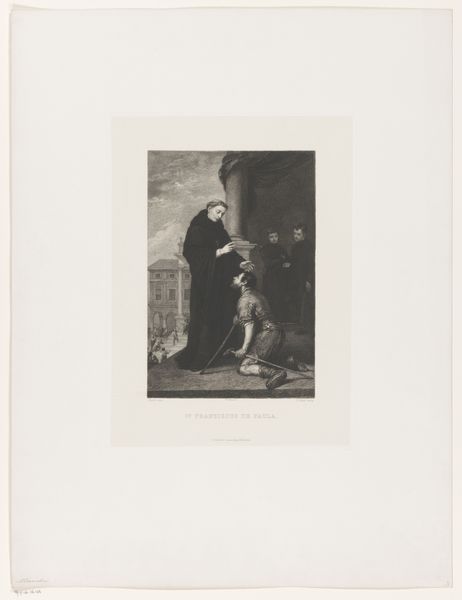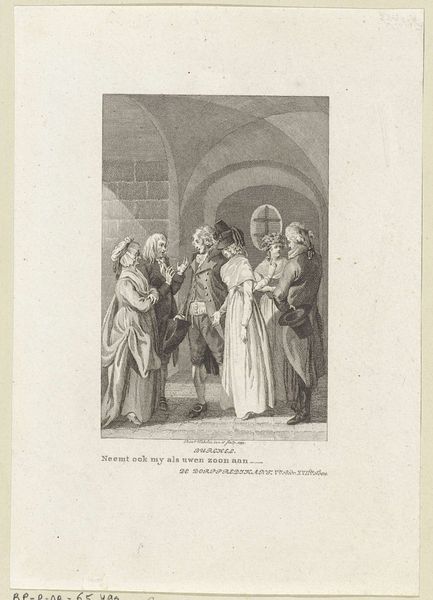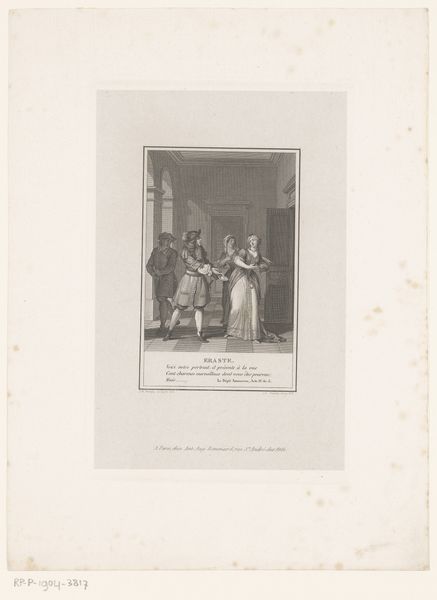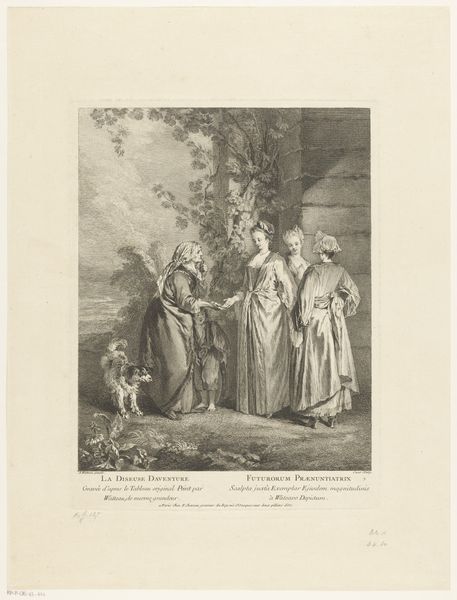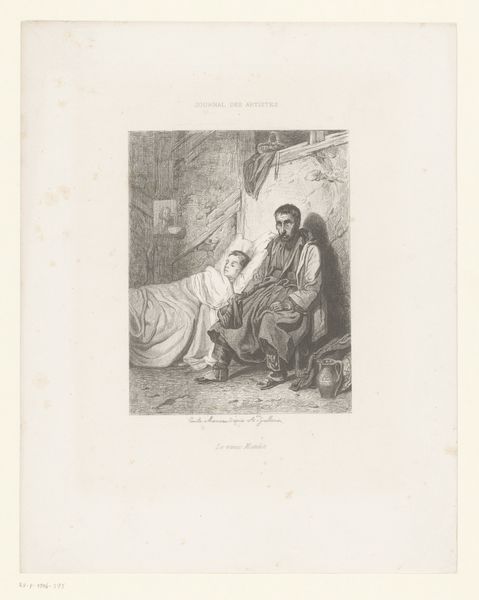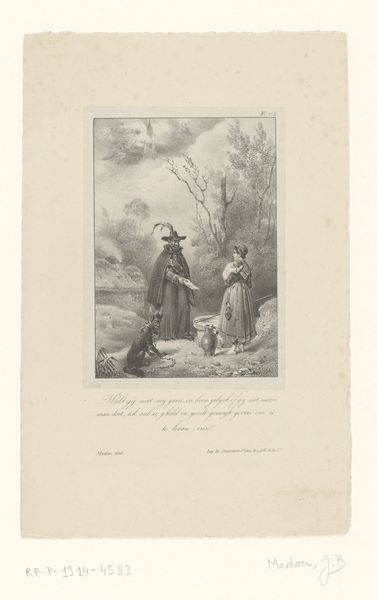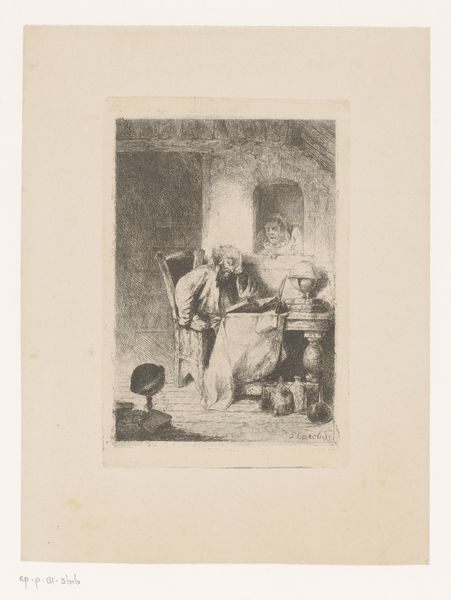
drawing, print, paper, engraving
#
portrait
#
drawing
#
narrative-art
# print
#
paper
#
genre-painting
#
academic-art
#
engraving
Dimensions: 295 mm (height) x 229 mm (width) (Plademål)
Curator: Here we have Edvard Sonne’s “An Italian Wife Kissing the Priest's Hand,” made sometime between 1871 and 1875. What do you make of this genre scene? Editor: There’s a sharp contrast here between the light, almost casual depiction of the domestic scene and the weight it carries as a print, a mechanically reproduced image distributed amongst a consuming public. Curator: Precisely. Sonne created this within the framework of academic art, where narrative was crucial. Consider the composition: the family—mother, children—contrasted with the formal presence of the priest. What narrative is being presented? How does it solidify power? Editor: I'm drawn to the material aspects; the texture Sonne manages to create with engraving, mimicking the stone walls and worn garments, elevates it beyond just documentation. The act of depicting that very texture points to the economic realities and the labors of the Italian population being observed. Curator: Interesting point. Sonne's piece circulated within a specific market that exoticized Italian life while also imposing certain religious expectations and hierarchies. The 'kissing of the hand' speaks to that power dynamic and acceptance, even in poverty. Editor: Acceptance, perhaps, but also performativity. I see a calculated presentation. Consider the labor involved in producing an image for consumption – the very act mirrors, in a way, the performative submission of the peasant to the priest. Curator: That is a thought-provoking analysis. The church was indeed central in the community fabric, influencing the rhythms of labor and social mobility. Sonne's choices may reveal something about his own perspective and that of his buying public. Editor: Well, to look at this image today gives one pause to consider the long history of images mediating and perhaps misrepresenting economic and cultural exchange, something easily missed if you only look for the ‘historical meaning’. Curator: True enough. We tend to forget the social network through which these images once moved. Thank you for offering insight into those material realities, the less obvious forms of labor and circulation. Editor: It’s important not to just look at what is depicted, but the processes by which that depiction reaches an audience. Perhaps considering Sonne’s role in that cycle tells its own revealing story.
Comments
No comments
Be the first to comment and join the conversation on the ultimate creative platform.
